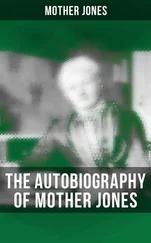Our close relatives have different life-styles. From a human perspective, chimps are deplorable but gorillas dull. A male chimpanzee copulates hundreds of times with dozens of females each year. The faithful gorilla, on the other hand, has to wait for up to four years for his female to be ready to mate after she has given birth, and even then she is available for just a couple of days each month. That means intense competition among gorilla males foraccess to females. A successful male may accumulate half a dozen or more, which leaves many gorilla wallflowers out in the cold and anxious to fight for their reproductive rights. Often, these fights are savage, since what is at stake is the male's evolutionary future. Humans are unlike any other primate as they live in large groups as {more or less) faithful pairs. In this, people are more similar to seagulls than to any ape. The closest in behaviour to ourselves is the pygmy chimpanzee. This forms long-lasting pairs within a stable but small group of individuals and has other attributes not unlike our own (such as face-to-face copulation). The average Frenchman or Briton has ten sexual partners in his life and, as in many primates, there is more variation among men in their success than among women. One in a hundred men is responsible for one in six of the females who have sex.
Monkeys and apes show a good genera! fit between the size difference of the sexes and patterns of mating. In those species with large harems and angry bachelors, males are much bigger than females, because bulk and aggression help in the battle for partners. Gorilla males are twice as large as females, while the chimpanzee's more relaxed society has taken the pressure off sexual hostility and males and females weigh about the same. The argument from anatomy (restricted as it is in a socially complex animal like ourselves) suggests that humans, with men just a little larger than women, have a history of mild polygamy intermediate between that of chimp and gorilla.
Our own behaviour is flexible and often shifts (as in the recent change towards serial monogamy, constancy within a relationship but more than one relationship in a lifetime). There do seem to be some general rules. Strict monogamy is rare and, in most societies, most men have more than one mate during their lives. Polygamy (one male with several wives at once) is far more common than polyandry, the opposite pattern, although this exists in Tibet. In polygamous societies as a few men have many wives some must have none.
There are hints of a more salacious past for humankind than that recorded in the modest difference in male and female size. In many mammals, the struggle between males does not stop at copulation. Sperm compere too. Often a female uses the sperm of the male she mated with last, which means that a successful sperm donor must ensure that no other male mates with her until the eggs arc fertilised. Dogs, for example, stay paired after copulation because the male is guarding the female against intruders. A more subtle way to help one's own sperm is to Hood out the contribution of the previous visitor. Different primates show quite a good fit between the size of the testes and the extent of male promiscuity. Chimpanzees, the Lotharios of the primate world, have enormous testes while gorillas, in spite of rumour to the contrary, are far less well endowed. Humans are not too different from chimps in this respect (which may say some startling things about our past). Real enthusiasts for evolutionary explanations point out that men produce more sperm when they return to their partner after a long absence, perhaps to overwhelm any alien sperm that may have intruded. There is also the question — as yet unanswered by science — as to why, in penis size, man stands alone. There are limits to what biology can explain and this may be beyond them.
James Boswell in his London journal (which reveals himto have been no mean performer in his own right) wrote that 'If venereal delight and the power of propagating the species were permitted only to the virtuous, it would make the world very good.' Darwin, too, noticed that sexual selection (as he called it) might do more than improve a male's ability to defeat his ardent competitors. He was much concerned with the evolution of characters with no obvious biological advantage {such as the peacock's tail or the large human penis). The struggle for sex might, Darwin thought, have subtle consequences. If females prefer, for one reason or another, a particular male attribute (such us a bright tail), then males who have it will reproduce more successfully. The tail or its equivalent will become more common in later generations and the showiest males will once again be preferred. In time there may evolve bizarre structures which are so expensive to the unfortunate males that they can evolve no further. Female choice may, Darwin suggested, be as important a part of the sexual equation as is male aggression.
In his book on the subject, The Descent of Man and Selection in Relation to Sex, he went further. He suggested that sexual preferences explained why human races looked so different. It was not that they had evolved to fit the place in which they live, but as a consequence of arbitrary choice of a partner. In different places, those looking for a mate may have made different and quite capricious choices. In time, the people of the world diverged: for example, Darwin speculated, those with darker skins might have been seen as more attractive in Africa and those with lighter in Europe. People do tend to marry others who are similar to themselves in intelligence, colour and body build, but there is no evidence that such choices are important in evolution. On average, men — of whatever racial group — do tend to prefer relatively light-coloured females. If sexual selection was important then the blondes will prevail. As they have not, perhaps Darwin was wrong; or, perhaps, the whole issue of sexual choice is so open to social convention that the argument can never be tested.
Men do tend to agree in their estimation of how attractive a particular female might be. Galton made composite photographs in which the pictures of a number of society beauties were printed one on top of the other in the hope of some vision of the ideal woman. His Ms Averages look rather insipid to the modern eye. The job can now be done by computer. For both male and female faces most people find an image made up of several individuals more attractive than one based on a single person, and the more faces used the more appealing it seems. Why there should be this triumph of the typical is not certain (although some suggest that those with extreme faces might also have aberrant — and less desirable — genes). Faces mixed together even out the differences between left and right. A simple experiment with a photocopier shows how two-tanxl most of us are. Two left cheeks or two rights often look alarmingly different one from the other. As each side of the face is made by the same set of genes, perhaps the greater the asymmetry the feebler the genes. Models (noted for their sexual attractiveness) tend to have symmetrical features and often reveal as much with a full-face smirk into the camera. Again, sexual choice may be involved, although the evidence is weak.
Any discussion of the evolution of sex seems doomed to stray onto such untamed shores of speculation. Males carry eccentric and expensive ornaments, some say, to demonstrate to potential spouses that their genes are good enough to bear the cost. The idea has been used to explain bizarre patterns of human behaviour. Perhaps men take alcohol, tobacco or stronger drugs to demonstrate to women how tough they are, how their constitutions can cope with mistreatment and how they might make excellent fathers as a result. The small tubes found in the tombs of Maya Indians might have been used to give ritual enemas of toxic drugs to the most powerful men, as a guarantee of instant intoxication and a statement of sexual prowess. The habit did not spread.
Читать дальше
Конец ознакомительного отрывка
Купить книгу












